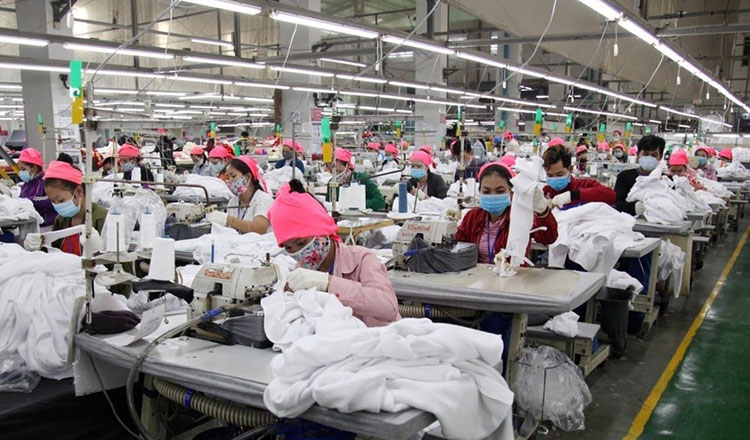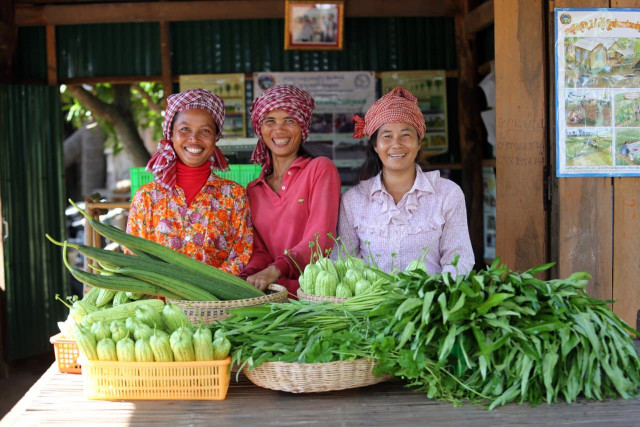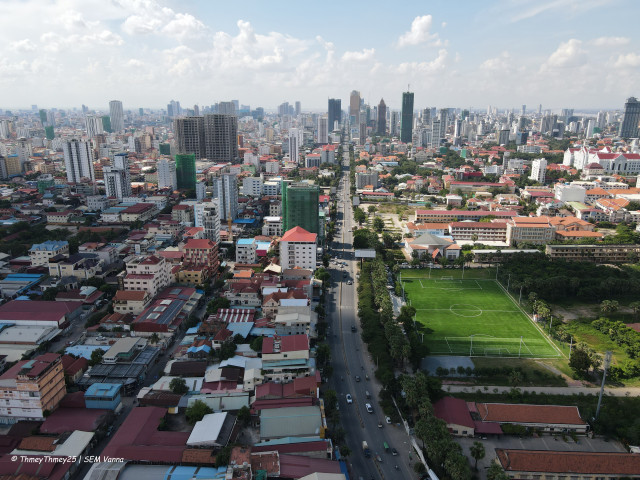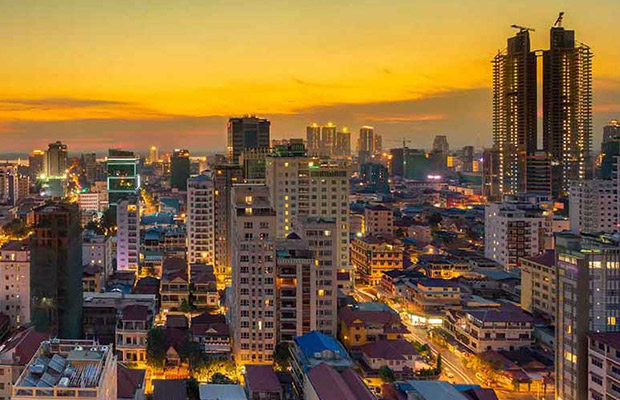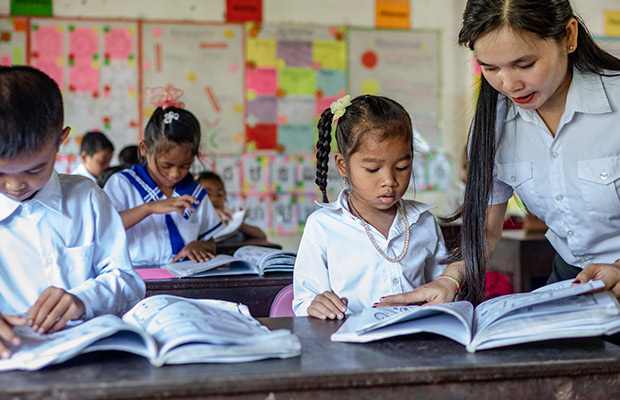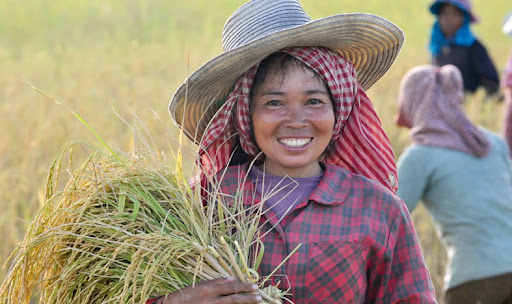- Economic Overview: Cambodia is a lower-middle-income country located in Southeast Asia, bordered by Thailand, Laos, and Vietnam. The Cambodian economy has experienced robust growth since the early 1990s, driven by political stability, economic reforms, and foreign investment. While agriculture remains a significant contributor to GDP and employment, Cambodia’s economy has diversified in recent years, with rapid expansion in manufacturing, services, and tourism sectors.
- Key Economic Sectors:
- Agriculture: Agriculture has traditionally been the backbone of Cambodia’s economy, employing a large portion of the population and contributing to rural livelihoods. Key agricultural products include rice, cassava, rubber, sugar, and fisheries. Government initiatives such as the Agricultural Sector Strategic Development Plan aim to modernize the agriculture sector, increase productivity, and enhance food security.
- Manufacturing: Cambodia’s manufacturing sector has experienced rapid growth, fueled by foreign investment, favorable labor costs, and preferential trade agreements. The garment and footwear industry is a major contributor to export earnings, accounting for a significant portion of Cambodia’s GDP and employment. Other emerging industries include electronics, textiles, and light manufacturing.
- Tourism: Cambodia’s tourism industry has grown exponentially in recent years, driven by attractions such as the Angkor Wat temple complex, pristine beaches, and cultural heritage sites. Tourism contributes significantly to GDP, foreign exchange earnings, and job creation, supporting various sectors such as hospitality, transportation, and retail. However, the COVID-19 pandemic has severely impacted the tourism sector, leading to a sharp decline in visitor arrivals and revenue.
- Construction and Real Estate: Cambodia’s construction and real estate sector has experienced rapid expansion, driven by urbanization, infrastructure development, and foreign investment. Phnom Penh and other urban centers have witnessed a construction boom, with residential, commercial, and industrial projects reshaping the urban landscape. However, concerns have been raised about issues such as property speculation, land disputes, and environmental sustainability.
- Services: The services sector, including finance, telecommunications, and logistics, plays an increasingly important role in Cambodia’s economy. The banking and finance sector has grown rapidly, with the establishment of commercial banks, microfinance institutions, and insurance companies. Telecommunications and digital services are also expanding, driven by rising internet penetration and mobile phone usage.
- Challenges Facing the Economy: Despite its impressive growth, Cambodia’s economy faces several challenges, including:
- Poverty and Inequality: Cambodia remains one of the poorest countries in Southeast Asia, with high levels of poverty and income inequality, particularly in rural areas. Addressing poverty and reducing disparities in wealth distribution are key priorities for sustainable development.
- Weak Institutional Capacity: Weak governance, corruption, and bureaucratic inefficiencies hinder economic development and investor confidence. Strengthening institutions, enhancing transparency, and combating corruption are essential for fostering a conducive business environment.
- Infrastructure Deficits: Cambodia’s infrastructure, including roads, ports, and energy, lags behind regional standards, impeding economic growth and connectivity. Investments in infrastructure development are needed to support sustainable development and facilitate trade and investment.
- Skilled Labor Shortages: Despite a youthful population, Cambodia faces shortages of skilled labor and a mismatch between education and market demand. Improving education and vocational training programs, as well as promoting technical skills development, are crucial for building a skilled workforce and enhancing productivity.
- Environmental Sustainability: Rapid economic growth has led to environmental degradation, deforestation, and pollution, threatening Cambodia’s natural resources and ecological balance. Sustainable development practices, environmental regulations, and conservation efforts are needed to mitigate environmental risks and promote long-term sustainability.
- Opportunities and Future Prospects: Cambodia’s economy offers several opportunities for growth and development, including:
- Regional Integration: Cambodia’s strategic location in mainland Southeast Asia positions it as a gateway to regional markets and trade corridors. Participation in regional initiatives such as the ASEAN Economic Community (AEC) and the Belt and Road Initiative (BRI) presents opportunities for increased trade, investment, and connectivity.
- Diversification: Diversifying the economy beyond traditional sectors such as agriculture and manufacturing can reduce dependence on volatile commodity markets and enhance resilience to external shocks. Investing in innovation, technology, and knowledge-based industries can drive economic diversification and competitiveness.
- Human Capital Development: Investing in education, skills training, and healthcare can unlock the potential of Cambodia’s youthful population and promote inclusive growth. Improving access to quality education, vocational training, and healthcare services can enhance human capital development and productivity.
- Green Growth: Embracing sustainable development practices, renewable energy, and green technologies can support Cambodia’s transition to a low-carbon economy and mitigate environmental risks. Promoting eco-tourism, conservation, and sustainable agriculture can capitalize on Cambodia’s natural resources while preserving biodiversity and ecosystems.
In conclusion, Cambodia’s economy has made remarkable strides in recent decades, driven by economic reforms, foreign investment, and sectoral diversification. However, challenges such as poverty, inequality, governance, and environmental sustainability persist, requiring concerted efforts from government, private sector, and civil society stakeholders to address. By capitalizing on its strengths, addressing its weaknesses, and embracing opportunities for growth and development, Cambodia can realize its potential as a dynamic and resilient economy in the region.


